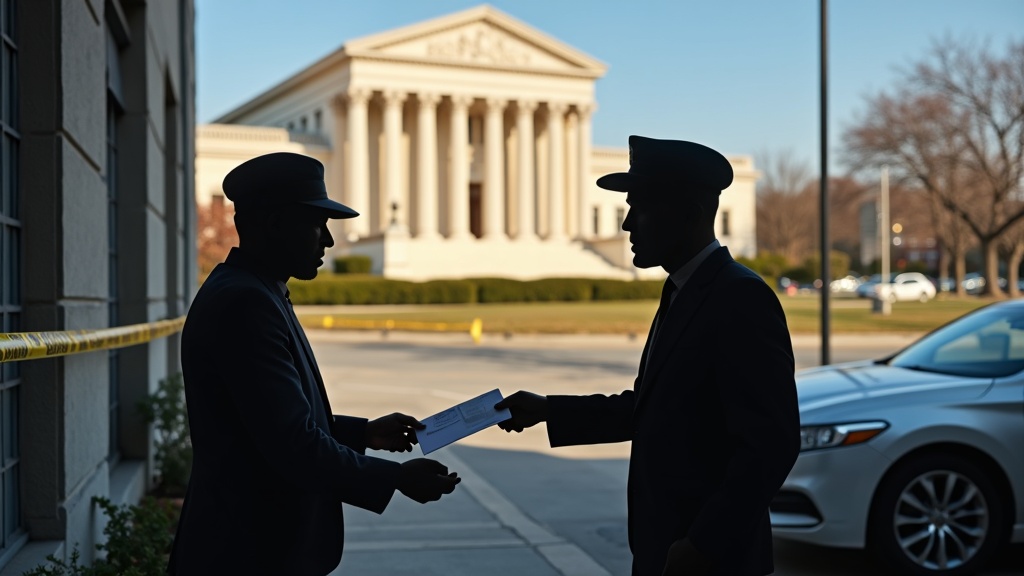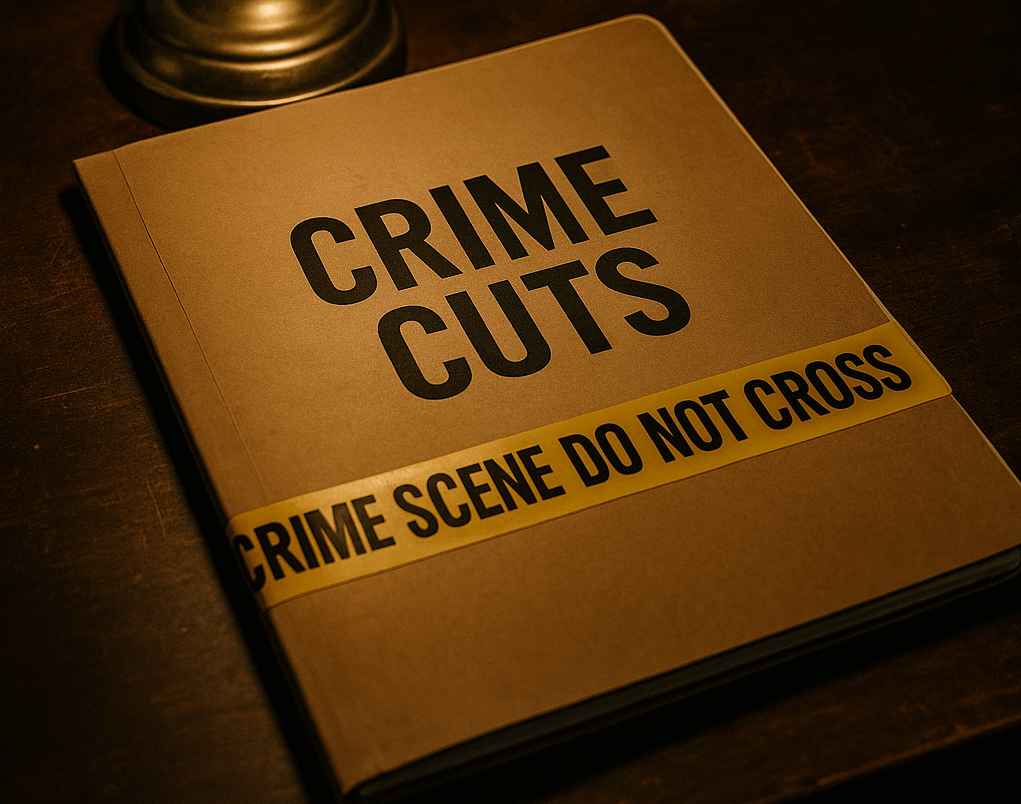Recognizing signs of corruption isn’t just something for watchdogs or officials in high places. It affects everyone, especially when it starts interfering with public safety. Corruption can be a hidden force behind unsafe communities, letting crime grow, crushing confidence in the system, and putting people who just want to live their normal lives at risk. I’m going to walk you through how to spot the red flags of corruption, why it matters for the safety of both individuals and communities, and what everyone can do about it, focusing specifically on North America and border situations.

Why Recognizing Corruption Matters for Public Safety
Thinking about corruption usually brings to mind images of backroom deals and money changing hands. But when it comes to public safety, the urgency changes. Public safety gets threatened when corruption lets cartels operate unchecked, police ignore crimes, or justice systems help offenders walk free.
In Mexico, corruption’s tangled with organized crime. Cartels thrive when security officials turn a blind eye, or even worse, are on the cartel payroll. Kidnappings, extortion, and cartel violence ramp up in places where corrupt practices are the norm. In the United States, border regions sometimes see officials cooperating with traffickers, and regulatory loopholes can help criminal groups evade consequences. Trouble with police corruption and public safety doesn’t stop at the border; it ripples into migrant safety, gang activity, and everyday crime on both sides.
Recognizing these patterns helps people make smarter decisions and keeps pressure on public agencies to stick to their duties. For journalists and advocates, tracking down the fingerprints of corruption makes investigations sharper and advocacy more powerful. For regular citizens, knowing what to look for means being better prepared to spot trouble and lower risks for themselves and their communities.
What Is Corruption in the Public Safety Context?
Corruption comes in many forms, and within public institutions, it stretches from bribery and embezzlement to trading in influence and abuse of office. When a police officer looks away for cash, that’s a clear case. But sometimes it’s subtler, like nepotism (favoring family or friends for jobs) or clientelism (rewarding supporters with contracts or government favors).
Most experts group it into two main types:
- Grand Corruption: Large-scale bribery or the involvement of influential politicians with organized crime, often affecting major contracts, budgets, or the justice system.
- Petty Corruption: Everyday, smaller-scale actions, like paying off an officer to escape a ticket or slipping money for a quickly processed permit.
Key actors include police, prosecutors, judges, border agents, customs officials, and local politicians who control resources or appointments. When any of these roles are compromised, everyone starts to feel the impact. Ideas like “state capture” or “narco-politics” describe what happens when criminal groups take control of public offices. In those situations, decisions favor organized crime over public good.
Recognizing Practical Signs of Corruption in Daily Life
Institutional Indicators
Certain signs appear in how public officials and agencies function. Here are things I look out for:
- Obvious crimes—like fuel theft, drug sales, or cartel checkpoints—regularly are ignored or go without punishment.
- Officials or police suddenly flaunting wealth, such as luxury homes, cars, or expensive trips, with no justification.
- Unplanned or unexplained policy switches or quick promotions favoring people or groups linked to crime.
- Selective enforcement: tough laws get used only against political opponents, while friends and families connected to power get a free pass.
Street-level and Citizen-Facing Signs
- Requests for bribes (“mordidas”) to dodge tickets, avoid arrest, or process licenses.
- Reports about “tarifarios,” or unofficial price lists for standard bribes, like in business licenses or customs operations.
- Needing a “coyote” or fixer just to access public services that should be available to everyone.
- Criminal acts happening in plain sight near police stations, government checkpoints, or public buildings with no response from authorities.
Media and Data “Red Flags”
- News stories about government secrets getting leaked to criminals, which results in botched raids or blown searches.
- Investigations connecting public contracts or major projects to relatives or partners of leading officials.
- Official crime stats that don’t make sense compared to what citizens actually experience. For example, the data says zero kidnappings, but locals know otherwise.
Warning Signs vs. Legal Evidence
Spotting one suspicious behavior by itself doesn’t add up to legal evidence. What matters most is a repeat pattern multiple incidents or regular reports that build a bigger picture. When physical proof, witness accounts, and repeated stories line up, seriousness grows, and concern becomes actionable information.
How Corruption Undermines Public Safety and Fuels Organized Crime
The direct result of unchecked corruption in public safety? Crime gets a free pass, and cartels or big criminal groups gain confidence. Law enforcement can’t function if it’s compromised, and court cases fall apart when evidence disappears or witnesses get threatened. Organized crime feeds off these cracks—any spot where police or regulators are paid off becomes a breeding ground for criminal activity.
Impunity; the belief that criminals won’t be held accountable is a key factor driving violence and more crime. Once lawbreakers sense no real consequences, everything from drug smuggling to neighborhood rackets expands quickly. That spark wider violence, more disappearances, and even regular people paying bribes just to stay safe or access basic services.
Legal Frameworks Against Corruption: United States and Mexico
Both Mexico and the United States boast tough-sounding anti-corruption laws, but making them work is a different challenge.
In the U.S., laws like the Foreign Corrupt Practices Act and the Hobbs Act give agencies tools to investigate and prosecute corruption among public officials and even private citizens. The Department of Justice and FBI head up most cases. Whistleblowers who report wrongdoing get some level of protection, although sometimes not enough to truly shield them.
Mexico overhauled its anti-corruption system not long ago, building new special prosecutors and commissions. On paper, Mexican law targets bribery, ill-gotten wealth, and abuse of office. But enforcement proves much tougher—especially in regions where organized crime is entrenched or where protecting witnesses is tough. Because border crime goes both ways, U.S.–Mexico cooperation is crucial, but weak links or mistrust in either country can let corruption keep slipping through.
Law Enforcement, Prosecution, and Typical Corruption Scenarios
Chasing down and punishing official corruption is famously tough. Many cases fall apart because of weak evidence, intimidation of witnesses, or loopholes. Here are some typical scenarios:
- Police officers or border agents taking cash to ignore drug or human smuggling.
- Local politicians shielding themselves or their friends from prosecution with their power.
- Prosecutors or judges tossing cases due to “lack of evidence” even when it’s available, or giving out unreasonable, light sentences for serious crimes.
Those accused often resort to blaming superiors, claiming entrapment, or justifying actions by referencing unstated rules. Even when a sentence is handed down, it may not get enforced because of delays or interference from higher up.
Case Studies: Corruption and Its Public Safety Impact
U.S. Example
A former county sheriff in Texas ended up convicted for allowing cartel members to work from inside his own jail. During his term, cartel activity in the area jumped while actual arrests of cartel members dropped sharply.
Mexico and Cross-Border Example
Incidents like the famous escape of El Chapo or regular ambushes of police caravans have been linked to tips or inside help from compromised officials. These cases made people worry that no matter how high up security is, corruption can still break through, leaving whole communities feeling unsafe.
What Citizens, Journalists, and Civil Society Can Do Safely
There are ways for everyday people, journalists, and advocates to help spot and document corruption while keeping themselves safe:
- Keep thorough, anonymous records of suspicious events or repeated patterns, including the date, time, people involved, and what happened.
- Share any concerns with official hotlines and reporting platforms—both the U.S. and Mexico have resources through government and nonprofit groups.
- Use encrypted apps like Signal to communicate sensitive details with journalists or trusted organizations.
- If you’re considering going public, talk to groups that offer legal help and protection for whistleblowers.
Always put personal safety first. Risk management is crucial—don’t approach suspected corrupt officials yourself and reach out for help if it’s needed.
FAQ: Corruption, Warning Signs, and Public Safety
Here are some common questions people ask about spotting corruption and its effect on safety:
How do you spot police corruption on the street?
Requests for money in place of official fines, officers ignoring clear crimes, or tolerating well-known local troublemakers all suggest something’s off.
What’s the link between corruption and more crime?
When officials are paid to look away or are scared to act, criminals take bigger risks. This often leads to rising crime rates, more serious violence, and fewer solved cases.
Can regular citizens report corruption safely?
Yes, but you should use secure methods, keep any documents private, and consider connecting with support organizations if you’re worried about backlash.
From Suspicion to Accountability and Reform
Knowing how to spot corruption is one of the best ways to keep public safety systems on point. When people stay alert to the warning signs, share information safely, and ask for honest leadership, corruption faces a harder climb. Staying sharp and involved really does make a difference—leading to safer, more reliable communities for everyone.
